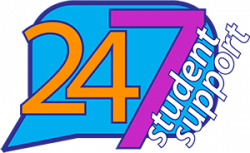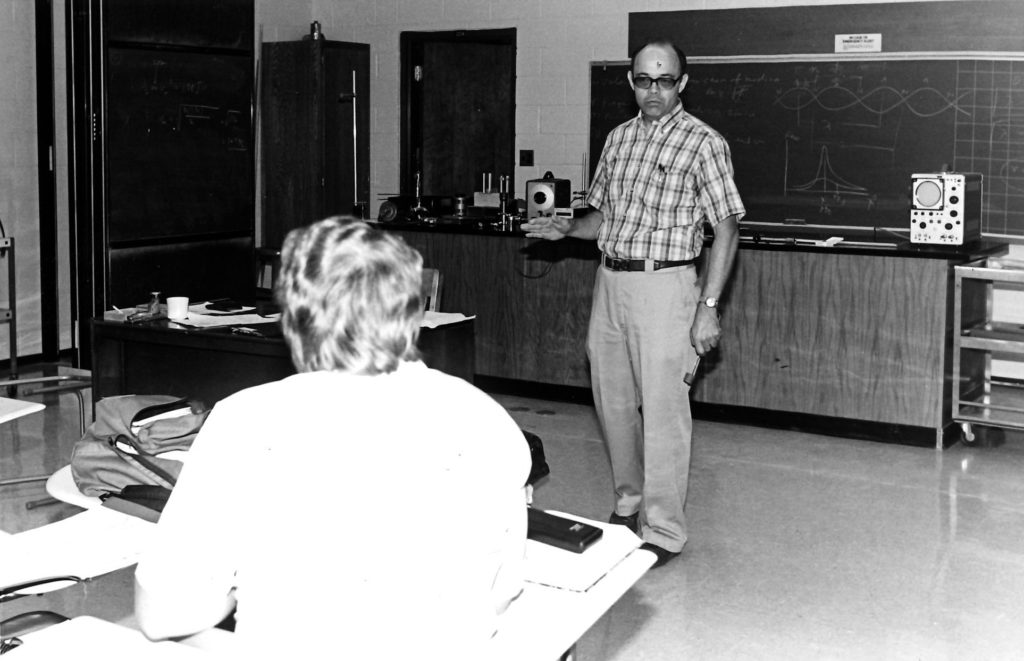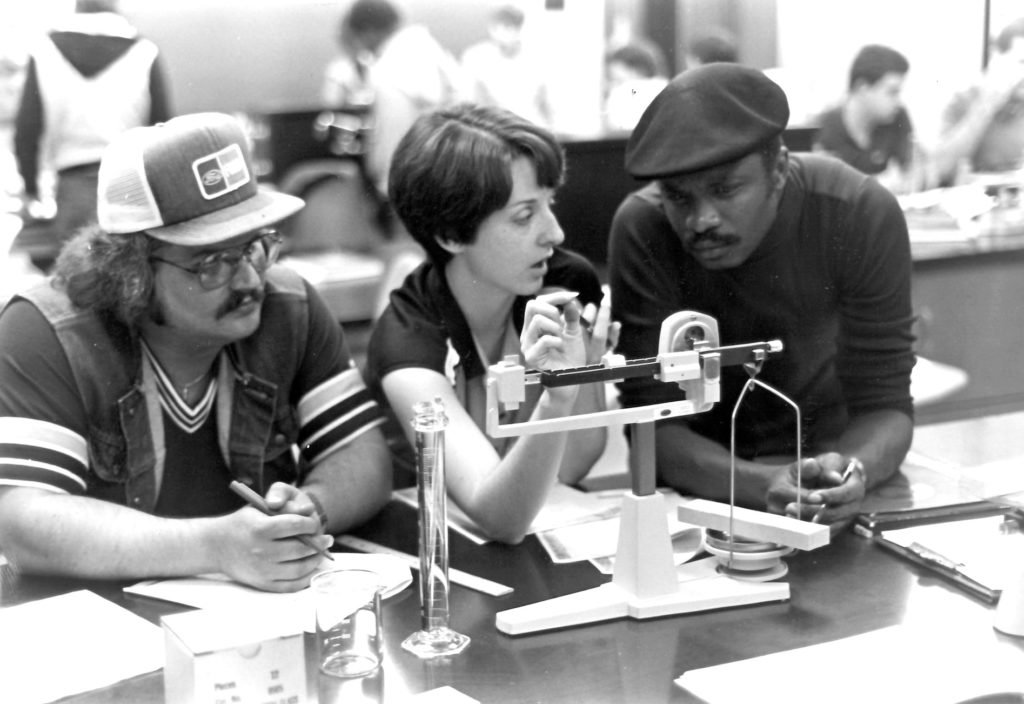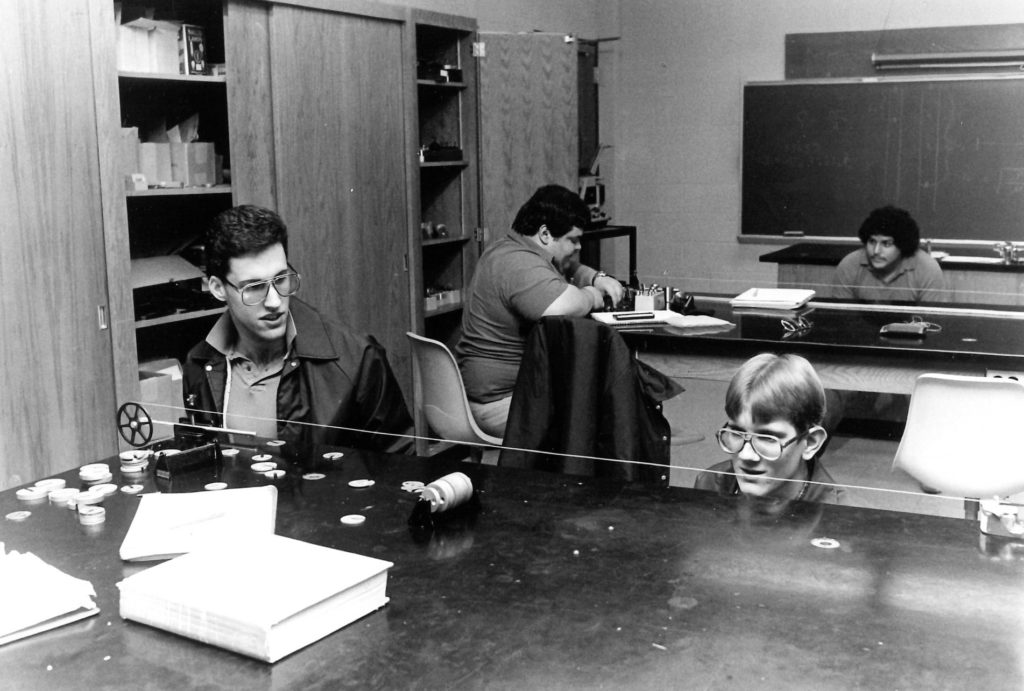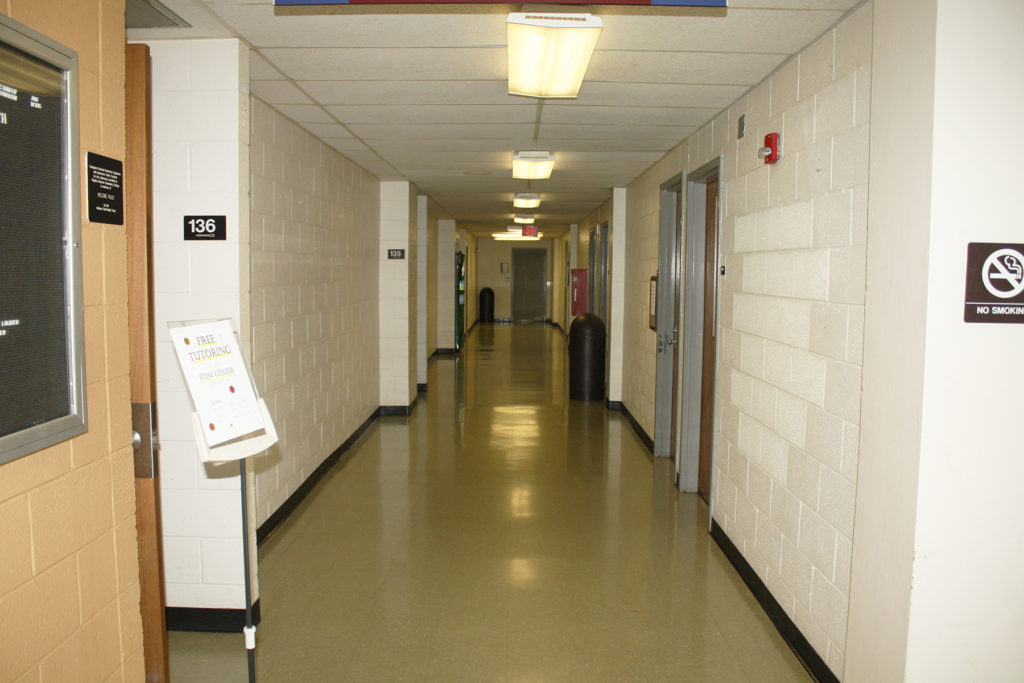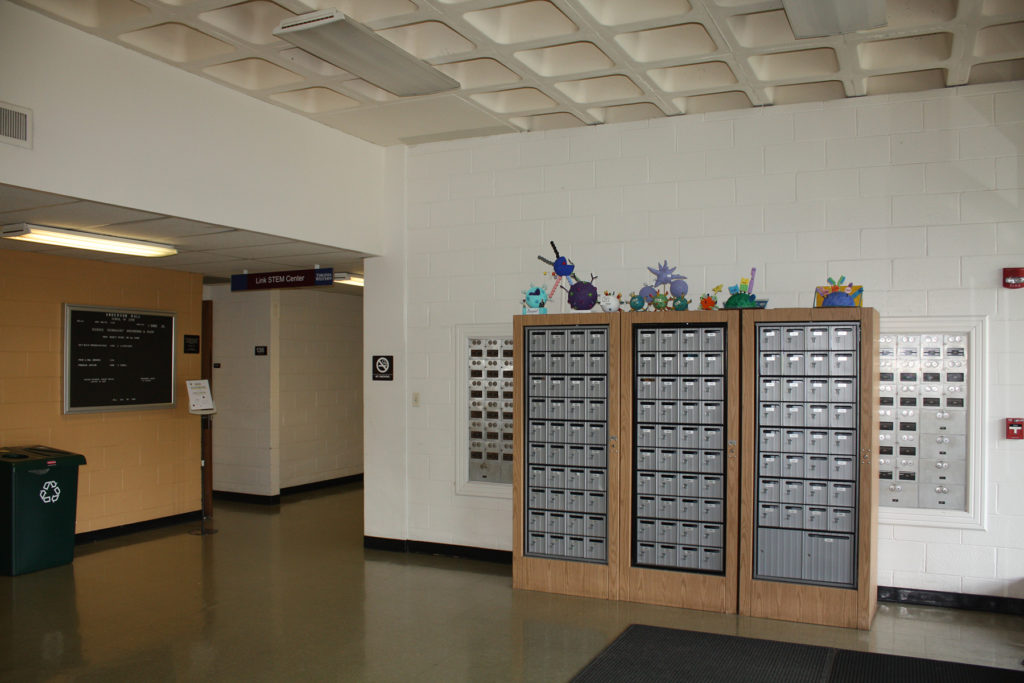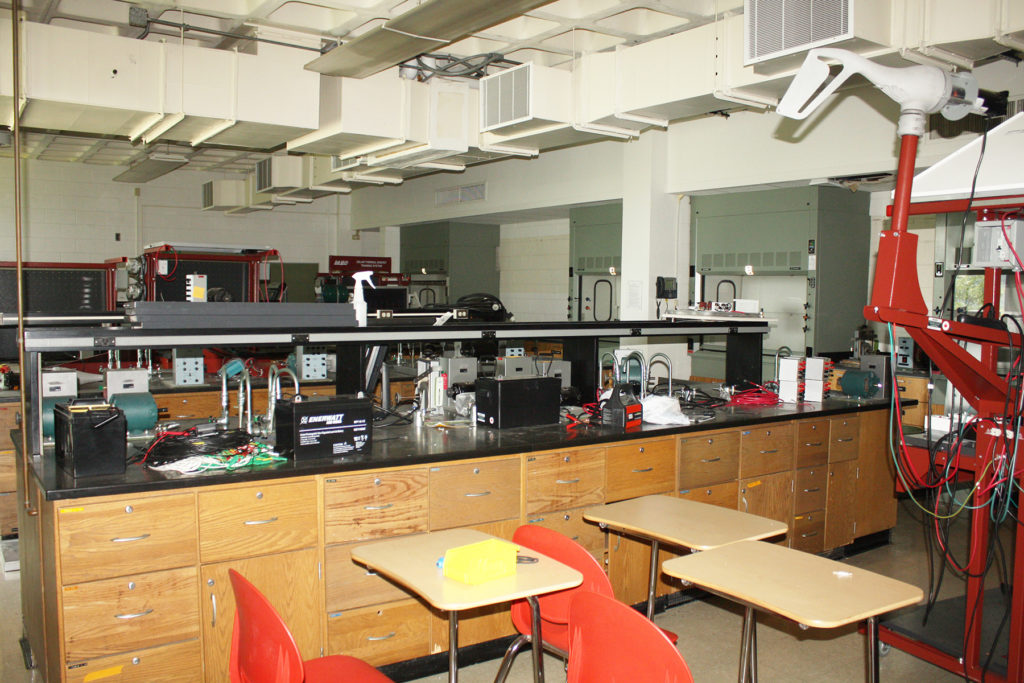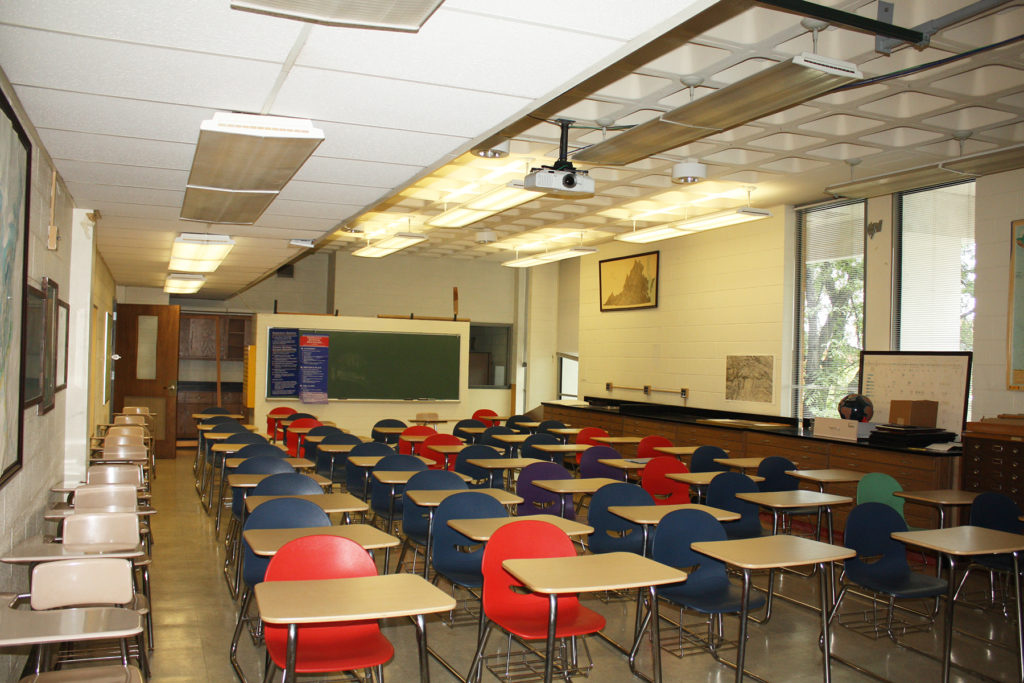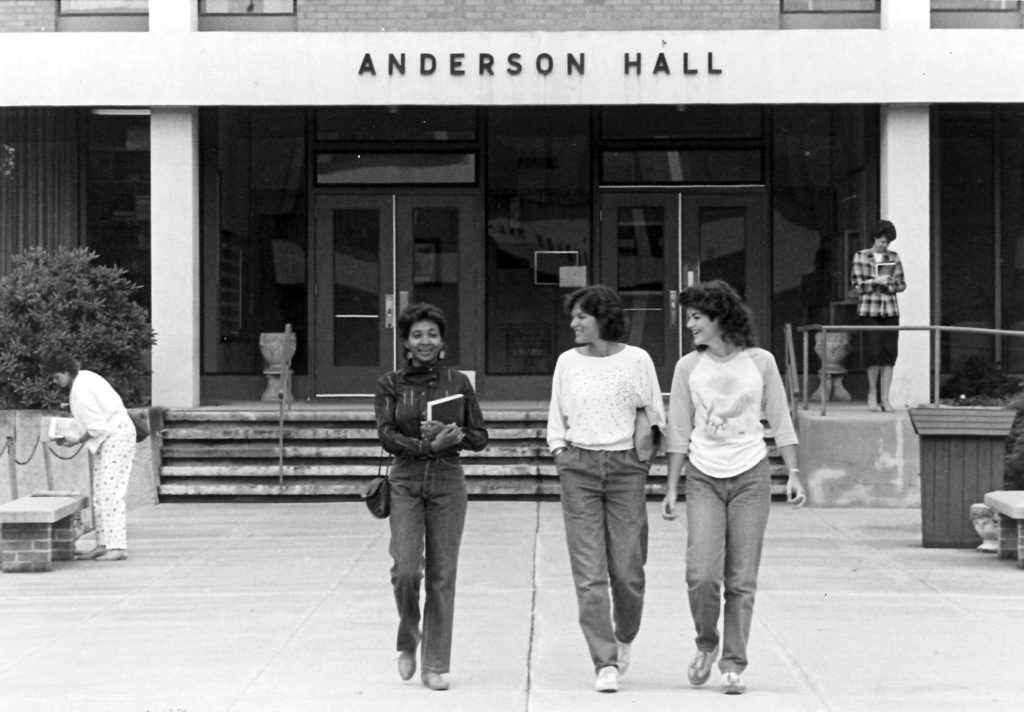
By Tiffany Michelle Stevens
As a young mailroom clerk working in Anderson Hall in the late 1990s, Amy Maiolo knew she didn’t have to worry about reaching her car safely after work. Lou Bass, a Virginia Western Community College professor who taught biology in the building at the time, was looking out for her.
“Back then, the lights in the parking lot above Anderson were constantly going out,” Maiolo said. “I was a young girl right out of college and he and another biology teacher were concerned about my safety.”
Years later, Maiolo said, Bass remained a comforting and protective presence in the building. Even after he died, she still sometimes was reminded of him while walking through Anderson.
“When I’d get in the elevator to take the deliveries upstairs, all of the sudden I could smell Lou,” Maiolo said. “There was a certain smell from the brand of cigarettes he smoked — I don’t know what brand he had — and the formaldehyde from the lab. Sometimes at night, I would all of a sudden smell that when I was getting ready to leave. It wasn’t frightening; it was comforting, like Lou was watching over me.”
Lou Bass’s memory is only one of several that faculty, staff and students alike associate with life in Anderson Hall. Over the years, the building has played a critical role in Virginia Western’s development. The college’s science, technology, math and dental programs all can trace their start to the historic building, and many programs outside of the school’s STEM offerings have taught their classes in Anderson as well.
“It was really a foundation for many of the programs we have now. So many programs and people can trace their root to Anderson Hall,” said Amy White, Dean of the School of Science, Technology, Engineering and Mathematics (STEM).
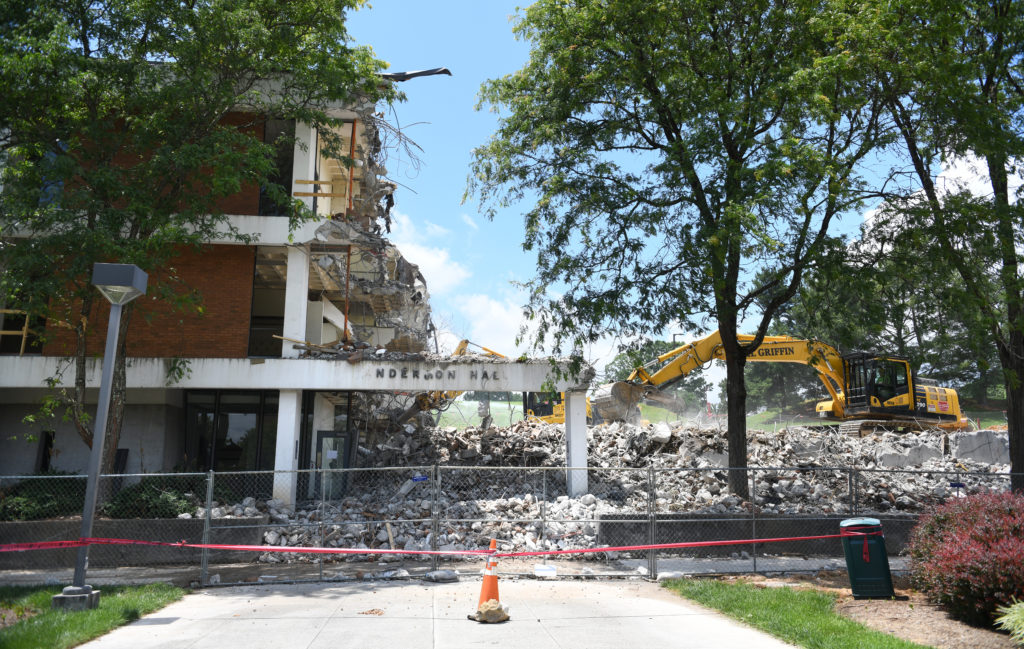
New generations of Virginia Western students will not have an opportunity to become acquainted with Anderson, however. The building was demolished during the summer of 2020; a potential green space is slated to take its place, with room in the future for an amphitheater to be built that students, faculty and visitors alike can enjoy. Hill Studio conducted an intensive architectural study in 2019 to lay out potential future uses for the area.
“From a sentimental standpoint, it is bittersweet. I went up there one day when it was being demolished and just paused for a little while and thought about the last 15 years,” White said. “It was a great time to reflect on so many talented people who came through those doors and grew within those walls.”
The Virginia Community College System established Virginia Western as its first of 23 institutions in 1966. Erected between 1967 and 1969, Anderson Hall was one of the first three buildings constructed as part of the new college. Located on the northern part of campus in the Court of the Four Seasons, it is neighbored by the other two buildings constructed between 1967 and 1969 — Brown Library and Fishburn Hall. Anderson Hall was named for William Anderson, a Revolutionary War veteran and local official who lived in Botetourt County in the late 18th and early 19th centuries.
The decision to demolish Anderson Hall came about, in part, due to Virginia Western’s need for expanded STEM resources on campus. In 2006, a team evaluated Anderson Hall to see if it could be remodeled to accommodate the classroom and laboratory needs of STEM students. When experts determined that features such as the building’s waffle slab structure and its inefficient energy systems would make Anderson Hall difficult to remodel, the College built the Horace G. and Anne H. Fralin Center for Science and Health Professions in 2013. A new STEM Building followed in 2019, on the south side of campus.
It wasn’t just the building’s structure that made Anderson Hall a bad fit for remodeling. Many of the departments inside the building had been making do with outdated equipment to teach students. Dental hygiene students, for example, were manually developing X-ray film instead of having access to more modern digital techniques.
Even the space where students would practice basic cleaning techniques was outdated. Colleen McGowan, co-director of Virginia Western’s dental hygiene program, said that the dental clinic contained an open bay where students conducted cleanings.
“It was one big room and all the chairs were set up like a horseshoe, and you could actually reach out and touch the patient next to you. You could hear the conversations to your right and left and in front of you, you could watch someone get their teeth cleaned,” McGowan said. “Given the times we’re in, and even with things like HIPAA, they don’t make those kinds of clinics anymore.”
Marty Sullivan, dean of Virginia Western’s School of Health Professions, said complaints about the outdated equipment frequently came up in student exit surveys. In some cases, graduates complained that their employers had to train them on newer technology.
“Now we are all digital, so it’s all real time and that offers a lot less radiation exposure to patients,” Sullivan said. “We also went to a state-of-the-art dental clinic that has electronic medical records so we don’t have any more paper charts. We have modern sterilization, we have modern instrumentation and modern equipment.”
Sullivan said the improvements made to the dental hygiene program after it left Anderson Hall are in line with the vision that Alice Becker Hinchcliffe Williams had when she founded the program in 1970.
“She was a dental hygienist and she approached the college to say you should offer this education,” Sullivan said. “That’s how the program started and it’s going strong. When Alice died, she left an endowment for dental hygiene scholarships. We also have some discretionary funding that allows us to offer some things to our students through the endowment that they otherwise might not have the opportunity to have. We’ve been able to buy equipment, we’ve been able to do faculty development through these funds, so she was really instrumental.”
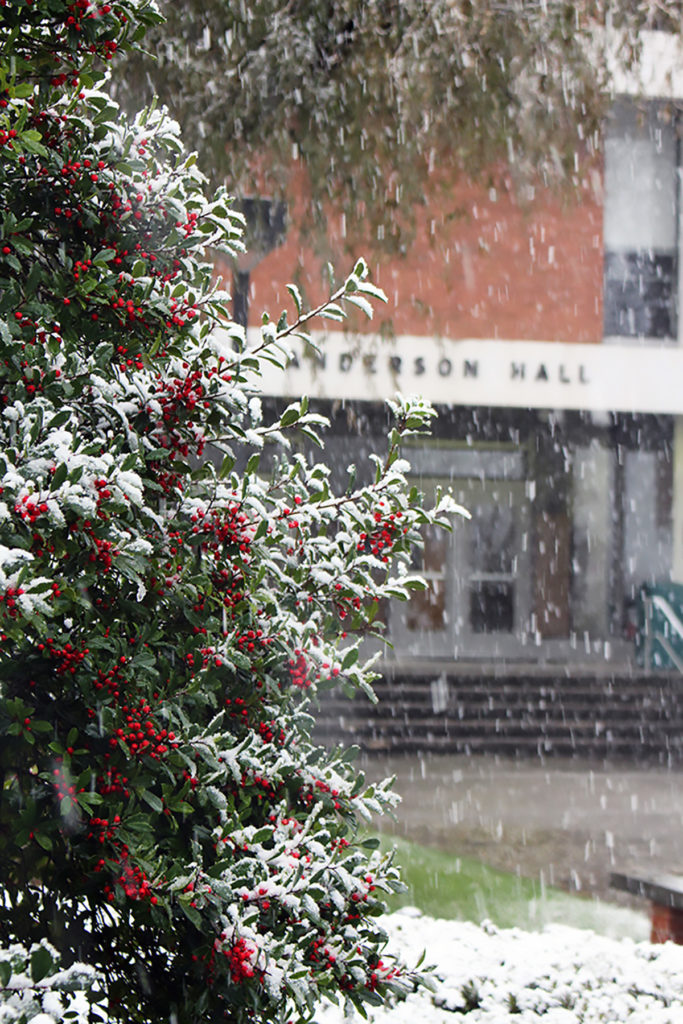
Anderson Hall did not only play host to students and faculty during its years as an academic facility. Among Maiolo and other campus veterans, the building affectionately became known as the “Critter Building” for its seemingly mystical draw over nearby fauna. In addition to chipmunks and groundhogs, the building became a frequent nesting and rest stop for local birds. Rich Crites, a beloved biology teacher at Virginia Western known by students and staff as “Mr. Wildflower,” was particularly enamored of the barn swallows that built their nests on the sides and back of the building, Maiolo said.
“When the guys would come and mow they would swoop down — they fly like bats — and sometimes it would scare the students a little bit. They thought there were bats out in the daytime,” Maiolo said. “Rich Crites was always talking about the birds. Every time I see the barn swallows I think fondly of him.” Another critter favorite were the chipmunks that resided right outside of Anderson. Pam Woody, a longtime Health Science advisor, fed these residents religiously; they would almost run to her when she came to feed them each day, even after she moved into the Fralin building. (Read Woody’s own recollections of Anderson here.)
Maiolo said she also fondly remembers Anderson Hall, especially the role the building played in bringing the campus together during its formative years. Since Anderson played host to the mailroom for a large portion of campus, Maiolo was able to get to know the majority of the professors and other staff members working in the business and science divisions. She fondly recalls chatting with former Virginia Western Dean Debbie Yancey back when she was a work-study student on campus. For her, Anderson Hall was a chief example of how Virginia Western’s staff and students worked hard to build a true community on campus.
“I wish I could’ve kept one of those mailboxes. That was something that reminds me of the fond memories I have of that building, when everybody would come and get their mail,” Maiolo said. “Then they’d stop for a few minutes and they’d tell me what things are going on around campus and check in on me, and then I’d check in on them. That was back when everybody knew everybody and they made an effort to get to know who was in the office. There was always a big thing about welcoming new people.”
White, too, said the building holds warm memories for her, not just as a place of employment but also as a place where her children grew up. She said her kids remember playing in Anderson’s halls and begging for sweets from Mary Perry, who served as administrative assistant over science and math. Julia Andrews, the administrative assistant over health, also played a crucial role in bringing the building’s occupants together, White said.
“Anything you needed to know about Virginia Western, you asked those two ladies,” White said. “They really ran the whole building.”
They were supervised by Dean Anne Kornegay, who was instrumental in the role that Anderson played on campus, and who mentored many campus leaders such as Sullivan, White and Rachelle Koudelik-Jones, who passed away in September 2020. Koudelik-Jones began as a math instructor, then served as Math Program Head and assistant dean under Kornegay. She then went on to administration and serves as the Dean of Institutional Effectiveness and led the College through the successful SACS fifth-year review.
Although newer generations of Virginia Western students won’t get to experience Anderson Hall directly, White believes the building’s legacy will continue. The building’s story, and its next iteration, is proof of the growth that Virginia Western has been able to accomplish over the past 50-plus years.
“The way I see it, Anderson isn’t dead because it lives on in Fralin,” White said. “It lives on in the STEM Building; it lives on in the Business Science Building and in the administrative wing of Fishburn Hall. The knowledge and spirit of Anderson Hall will continue to impact students for years to come.”
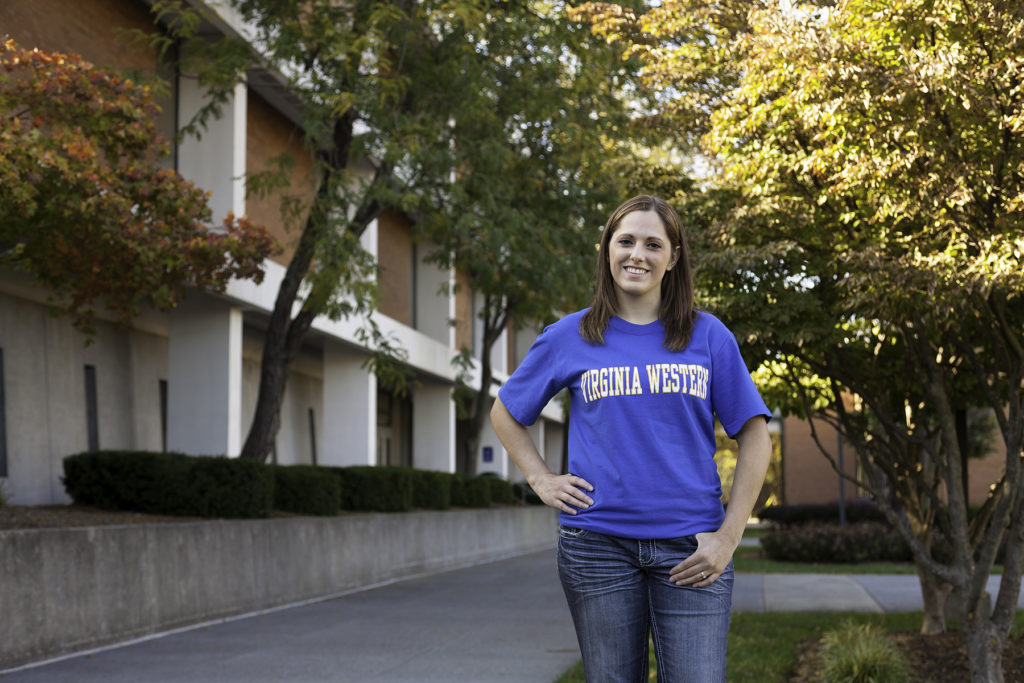
Would you like to share your memories of Anderson Hall with the College community? Email Carole Tarrant at the Virginia Western Educational Foundation, ctarrant@virginiawestern.edu.

